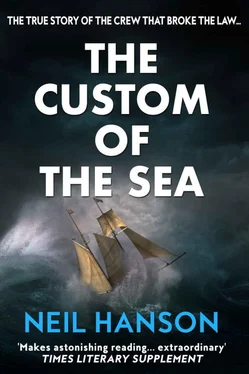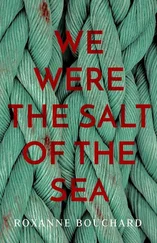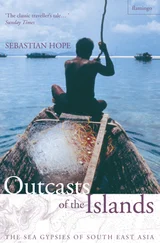Fanned by the headwind, the flames raced through the ship and ignited the cargo, including 1,700 gallons of linseed oil and almost 6,000 gallons of spirits. It was alleged that some of the emigrants had been plundering the spirits and that their drunkenness might have led to the fire.
The pump in the bow could not be operated because of the heat and flames from the forepeak hatch, and before long flames were also belching from the main hatch. Inside two hours the ship was ablaze from stem to stern. There were only enough boats for half the people on board and most of them could not be launched. There was no hoisting gear for the lifeboats, the planking of the cutter was rotten and it also had a large hole in its hull. The longboat caught fire before it could be launched.
Only two small boats were ready and so many panic-stricken emigrants and crew members rushed for one of them that the davits gave way and it capsized. The sea was thick with people struggling and swimming or clinging to scraps of wreckage, and the air was full of cries of terror and despair.
At last a sailor managed to right the boat, which was quickly filled with people. Only one other boat was safely launched. Its occupants held at bay the doomed emigrants left on board, and backed off from the Cospatrick .
The two boats contained only eighty-one passengers and crew. They lay up at a distance, unable to approach again both because of the heat from the flames and the fear that the desperate souls left on board would rush the boats and capsize them. At intervals passengers threw themselves into the sea, trying to swim to the lifeboats, but all were drowned. The burning masts collapsed in turn, first the foremast, then the mainmast, and finally the mizzen, which crushed many of the surviving passengers huddled on the poop.
Faced with being burned alive, many had already chosen to throw themselves into the sea and drown. Captain Elmslie threw his wife and child overboard then drowned himself as the flames started to sweep the stern.
For the next thirty-six hours, the lifeboats kept watch on the blackened and still burning hulk of the ship. Only when at last it disappeared beneath the waves were the fires finally extinguished.
The second mate, Henry MacDonald, in command of the starboard lifeboat, made a deal with the crew of the other boat. He took one oar and the blade of another in return for transferring five passengers to his craft to ease the overloading in the other boat. Amongst the five was Edward Cotter, one of the tiny handful of eventual survivors.
The boats stayed together until the night of 21 November, when they were separated by a gale. The port lifeboat containing forty-two people was never seen again.
In these deep southern latitudes, with only one usable oar, no food or water and with many of the occupants dressed only in their night clothes, the situation in the other boat remained desperate. People began dying from thirst and exposure. The first few were thrown overboard to reduce the dangerous overcrowding, but then the living ‘started to feast on the flesh and blood of the dead’.
Several were bled while still alive. ‘First the blood was drunk and then the flesh was eaten, and having done that, we committed the remains to the deep. The biggest, fattest and healthiest-looking went off first. It was not from them that the blood was obtained but from the other men,’ Cotter said. ‘I only ate twice. I drank whenever a vein was opened.’
On 26 November a ship passed within fifty yards of them but ignored their cries for help, and when they were at last rescued by the British Sceptre out of Liverpool, after ten days adrift, only five remained alive — Henry MacDonald, Edward Cotter, two other seamen and a single passenger who had gone insane. Two, a seaman and the insane passenger, died within a couple of days of their rescue.
For three days, Cotter was gripped by an insatiable thirst, constantly crawling across the deck to help himself to water from a cask lashed to the mainmast. His ravenous hunger lasted several months and he took to bribing a steward on the ship that eventually took him home to provide him with extra food.
Claiming to be the only survivor of 475 people, he was celebrated as a hero and,
taken about by a music-hall artist named Charles Williams, who worked me into a topical song. I had a seat in a stall near the stage and when Williams called attention to me there were storms of cheering. When we went from hall to hall in his brougham, there was such a rush to get a sight of me and shake me by the hand that more than once the windows were smashed. I was brass-bound by the company’s uniform at the time, and I dare say I was a very fine draw for the performance, though I did not realize it then.
In many other cases, cannibalism was never admitted but undoubtedly took place. The Mary left Port Jackson, New South Wales, on 19 May 1845, bound for London. There were twenty women on board, amongst a complement of forty-three passengers and crew. The ship was out of trim and began to leak badly almost at once.
On 24 May it struck Flinders Island in the Bass Strait. Heavy seas washed seventeen women overboard — or so the survivors said. Not one man was lost at the same time. They were stranded for eight days before being rescued by settlers, who described them as suspiciously well fed.
An eighteenth-century slave ship of the same name sank near the Canary Islands. Eight crewmen escaped in the only boat, leaving fifteen of their fellows and the cargo of slaves to drown. Only two of the eight survived; the rest were killed and eaten.
The crews of timber ships were particularly at risk. They were notoriously unstable and liable to founder, but paradoxically the buoyancy of their cargo also made them almost unsinkable, leading to a rash of incidents where, like the Peggy , crews slowly starved on the half-submerged hulks of their ships. So many were lost that a Parliamentary Select Committee on Shipwrecks of Timber Ships was set up in 1839. One of the cases it investigated was the loss of the Earl Kellie in the winter of 1835. The ship, an ancient East Indiaman, broached in bad weather, but having lost her anchor and rigging, she eventually righted herself in a waterlogged condition. In the freezing waters of the North Atlantic in midwinter, the crews attempts to find provisions by diving into the hold were unsuccessful, but they did catch a few rats. They drank their blood and ate their flesh.
A ship came upon them but could give no assistance as she had no boats that she could lower. Two weeks later another vessel, the Lord Melville , refused to take off the survivors because she had no provisions left. They were eventually rescued by another ship after being adrift for seventeen days.
The survivors of the wreck of the Frances Mary , whose tale Brooks had recounted to Richard Parker, had a similar experience. Ann Saunders later related how an English brig had sailed close to the hulk but refused to stop despite fine weather and calm seas.
Our longing eyes followed her until she was out of sight, leaving us in a situation doubly calamitous from our disappointment in not receiving the relief which appeared so near. Our hopes vanished with the brig and from the highest summit of expectation, they now sunk into a state of most dismal despair… Never could human beings be reduced to a more wretched situation. More than two-thirds of the crew had already perished and the surviving few — weak, distracted and destitute of almost everything — envied the fate of those whose lifeless corpses no longer wanted sustenance.
The surviving members of the crew of the American brig Polly had an even more terrible tale to tell. She sailed from Boston on 12 December 1811 with a crew of nine. Three days later she sprang a leak during a gale and capsized. The crew chopped down her mast and cut away her rigging to right the ship, but they were now adrift with few supplies in the depths of winter. They drifted two thousand miles over the following 191 days before the only two survivors were finally rescued by the Fame .
Читать дальше











